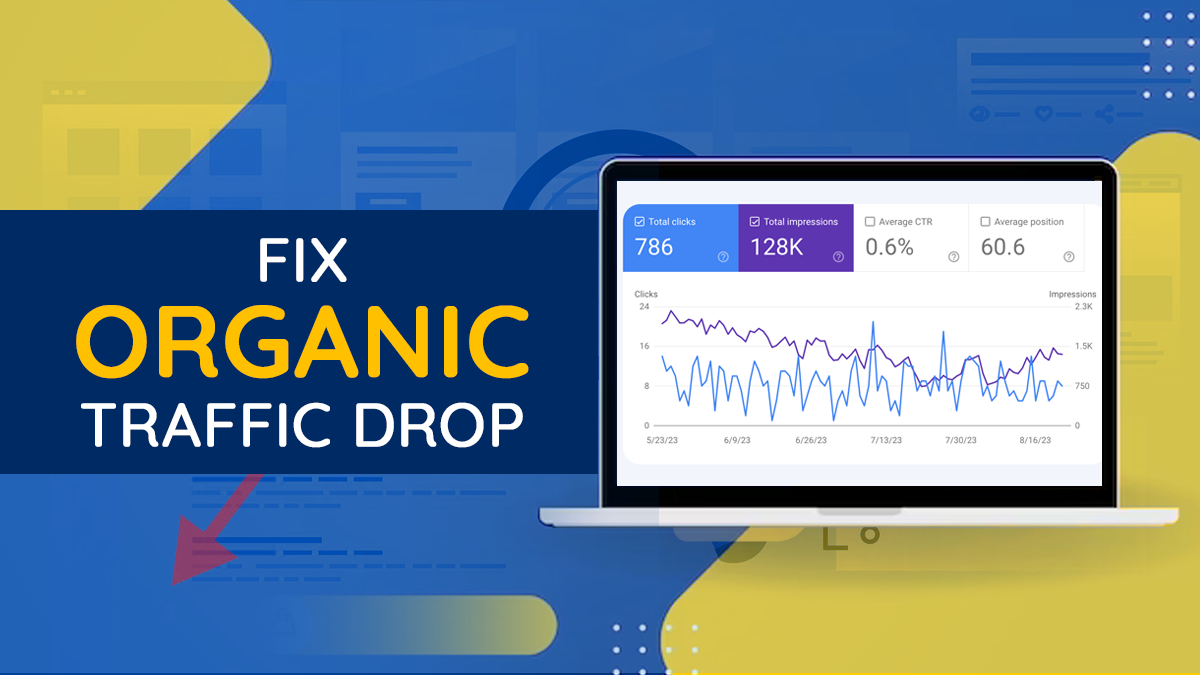As a website owner or marketer, encountering a sudden decline in organic traffic can be frustrating. If you’re wondering why this organic traffic drop has occurred, you’re not alone. This is a common concern that is frequently encountered on live chat support.
Over time, such inquiries have only increased due to the regularity of Google’s algorithm updates. It’s natural for website owners to feel anxious and seek advice hastily, often exacerbating the situation.
If you’re experiencing a panic-inducing drop in organic traffic, rest assured that you’re not alone, and it can be rectified with the assistance of a dedicated team like Stan Ventures.
However, it’s crucial to address this issue promptly to mitigate any potential risks to your business.
Given the significance of this issue within the SEO community, comprehensive insights into sudden organic traffic drops, their causes, diagnostics, and solutions will be provided. Let’s dive into it immediately.
Possible Causes For A Sudden Drop In Organic Traffic
Understanding the triggers behind issues is crucial for effective resolution. The sudden decline in organic traffic is no exception. SEO service providers excel in pinpointing the exact reasons for an organic traffic drop, employing their expertise to analyze data and implement strategic solutions for recovery and growth. Let’s delve into the common causes behind abrupt website traffic losses:
Google Algorithm Updates
Google frequently updates its algorithms to improve the online search experience, which can significantly impact your website’s traffic. The reason behind these fluctuations lies in Google’s heightened standards. Websites that fail to meet these standards often experience a sharp decline in traffic.
Every website is vulnerable to these updates, making it crucial for webmasters to adapt. While not all algorithm updates cause problems for your site, broad core updates can have a substantial impact, especially if your website doesn’t align with Google’s criteria.
To navigate Google’s algorithm changes successfully, staying updated on SEO industry trends, especially those relevant to your niche, is important. For example, if you manage a review website, closely monitoring Google’s Product Reviews updates is essential due to their significant impact on such sites. Ultimately, prioritize creating content that improves user experience and provides value to your target audience.
Manual Actions And Penalties
Google strictly penalizes websites that employ unethical tactics, commonly referred to as black hat practices, to manipulate their search rankings. These tactics are in direct violation of Google’s guidelines for website owners, now known as Google Search Essentials.
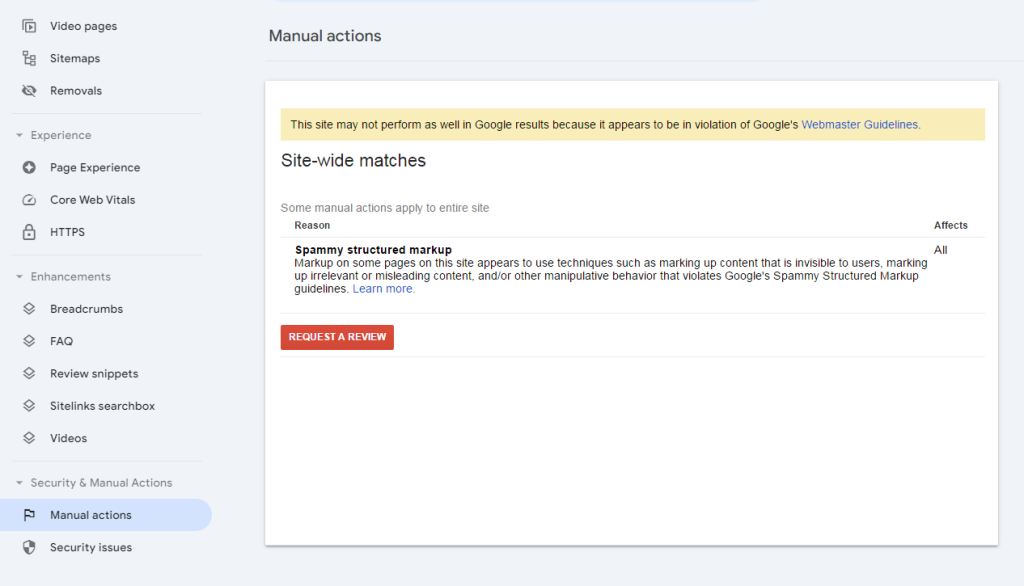
When a website resorts to such practices, Google may take direct action, resulting in penalties that can significantly impact the website’s performance. This often leads to a sudden and substantial decrease in organic traffic and a rapid decline in search rankings.
In the most severe cases, Google may go as far as completely removing the offending website from its index. This means the website will no longer appear in Google search results, rendering it invisible to users seeking relevant information.
Google notifies website owners of any violations through the Manual Actions Report in the Google Search Console. This report provides detailed information about the specific issues identified and the actions taken by Google.
However, website owners have the opportunity to address and rectify these violations. Once the issues have been resolved, website owners can request reconsideration from Google using the ‘Request Review’ option in the Google Search Console. This enables them to demonstrate that they have addressed the problems and are committed to adhering to Google’s guidelines in the future.
Also Read: Technical SEO Issues: Common Reasons Why Your Website is Not Ranking on SERPs
Technical Issues
Failing to address technical SEO issues on your website can result in significant consequences. Over time, these issues can lead to a notable decline in organic traffic.
Technical hurdles include sluggish site speed and performance, broken backlinks, 404 errors, mobile usability concerns, poor server response times, sitemap and indexing challenges, and more. Each of these issues can impede the functionality and accessibility of your website for both users and search engine crawlers.
For instance, slow site speed and performance can frustrate visitors, resulting in higher bounce rates and decreased user engagement. Broken backlinks and 404 errors create a subpar user experience, preventing users from accessing desired content. Mobile usability issues may alienate a significant portion of your audience who use mobile devices to access your site.
Additionally, poor server response time can further delay the loading of your web pages, heightening user frustration. Sitemap and indexing issues may prevent search engines from accurately understanding and indexing your site’s content, impacting your visibility in search results.
It’s crucial to recognize that these technical issues affect user experience and have implications for search engine optimization (SEO). Google, for example, considers factors like page speed and mobile-friendliness when ranking websites in search results. Websites that deliver a positive user experience are more likely to achieve higher rankings in search engine results pages (SERPs).
Modifications To Site Structure Or Content
When managing a website, staying informed about recent changes or updates is crucial. Whether adding new content, removing existing material, or redesigning the layout, these modifications can have significant implications if not executed properly.
A common scenario is during a website redesign or migration. Ensuring proper redirections and conducting a comprehensive hygiene check beforehand is essential. Failure to do so can disrupt the site’s organic traffic flow, as search engines may struggle to index and navigate the new structure effectively.
Moreover, altering the content of pages that rank prominently on search engine results pages (SERPs), like those on Google, requires caution. Even minor changes can inadvertently impact optimization levels. Over-optimization or de-optimization can decrease visibility and affect overall search performance.
Significant changes to a website’s content or user experience can cause sudden fluctuations in organic traffic. Users may struggle to find information or navigate the site, leading to a drop in traffic and engagement.
Therefore, it’s imperative to approach site updates with caution and diligence. Employ proper optimization techniques to maintain visibility and relevance in search engine results. Taking proactive measures to optimize pages effectively and minimize disruptions helps mitigate risks associated with fluctuations in organic traffic.
Competitor Activity
The escalating competition within your industry contributes to the decline in your site’s traffic. As competitors multiply, there’s a direct impact on your website’s traffic, potentially diverting potential customers to them. A drop in traffic also translates to a loss of prospects to competitors.
The market dynamics ensure a continuous influx of new entrants, regardless of your niche. Every day, new players enter the business landscape, making it imperative to monitor competitors closely and devise effective strategies to set yourself apart and improve your Google rankings. It’s crucial to be vigilant about competitor activities, develop strategies that distinguish you from the competition, and elevate your position on Google.
Failure to take these steps can leave you vulnerable to competitors who may overshadow your presence and leave you behind. Competitors will capitalize on opportunities and surge ahead without proactive measures, leaving you stagnant.
Therefore, adopting a proactive stance is essential. Analyze your competitors, identify areas where they outperform you, and refine your SEO strategy to outshine them. Hence, it’s vital to comprehensively analyze your competitors, identify their strengths, and refine your SEO tactics to surpass them.
How To Determine The Reasons Behind A Sudden Drop In Google Ranking
Understanding the common causes of sudden drops in Google rankings and subsequent losses in organic traffic is crucial. Identifying specific triggers for these drops on your website can be achieved through two methods:
- Regularly monitoring your organic traffic.
- Analyzing data and trends associated with your website’s performance.
Google Search Console
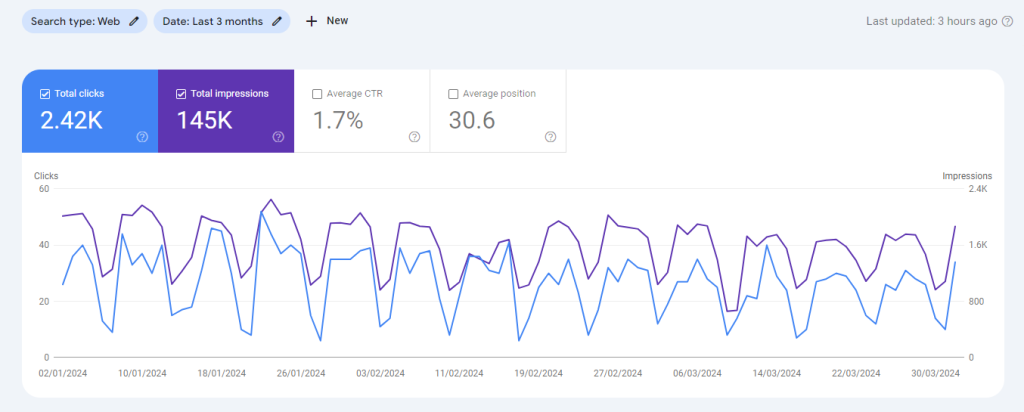
If your organic traffic is dropping, it could be due to various issues on your website. Luckily, Google Search Console is a valuable tool that can help you identify and rectify these problems, allowing you to get your traffic back on track.
Here’s how to diagnose and address the issue:
- Head over to Google Search Console: This platform serves as your central hub for conducting website health checks related to search.
- Look for notifications: Search Console sends alerts for any critical errors found on your website, including indexing issues, usability problems, server errors, and manual actions.
- Click on the notification: Each notification offers a detailed explanation of the problem and guides how to fix it.
- Fix the identified issues: Take necessary actions to address the problems highlighted in the notifications.
- Request a review: Once you’ve resolved the issues, request Google to re-evaluate your website through the Search Console.
- Monitor progress: If you’ve addressed the issues correctly, you should see improvements in your organic traffic and rankings over time.
- Check for rejection: In case Google identifies remaining issues, you’ll receive a notification indicating the need for further adjustments.
By following these steps and utilizing the tools provided by Google Search Console, you can effectively troubleshoot and address the issues causing your organic traffic to drop, ultimately aiming to regain your website’s visibility and user engagement.
Google Analytics
Monitor your website traffic in real time using Google Analytics to detect any unexpected drops. This allows you to address issues as soon as they arise, preventing them from significantly impacting your website’s performance.
Ensure that your Google Analytics tracking code is installed and functioning correctly. Double-check your code and make any necessary adjustments if you’re not seeing any traffic data.
Utilize the Real-time report in Google Analytics effectively to monitor website traffic flow and detect any decreases. Investigate further if you notice a sudden drop in organic traffic.
Note that if your analytics account displays no traffic data, your Google Analytics tracking code likely requires fixing or replacement.
Analyze the traffic data provided by Google Analytics to pinpoint areas of traffic loss. This allows you to prioritize revamping and optimizing the sections of your website that underwent modifications during that period.
Third-Party SEO Tools
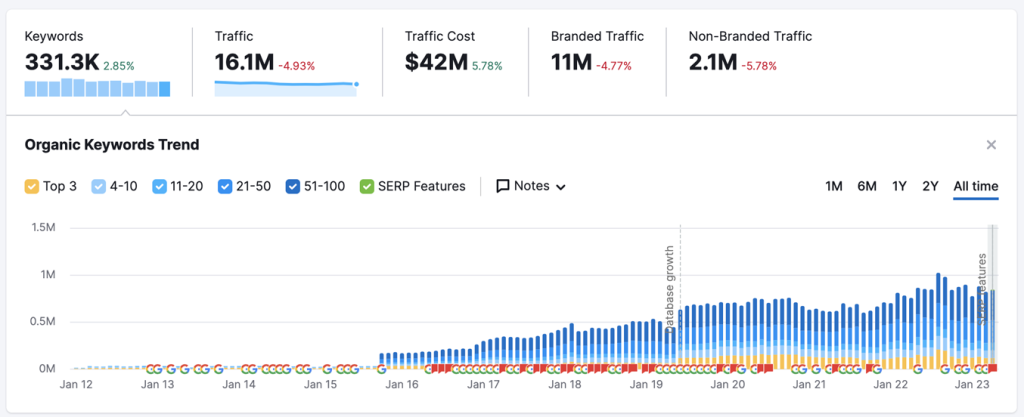
Utilize third-party SEO tools such as Ahrefs and Semrush to monitor your website’s traffic and detect any decline in traction over time. Remember, while small fluctuations are typical, a significant decrease in traffic linked to a specific keyword demands attention.
However, don’t solely focus on keywords. These tools provide insights beyond keywords, enabling you to uncover underlying patterns and correlations that may explain broader declines in traffic.
Take it a step further to gain a competitive edge. Identify your top-ranking pages using these tools to pinpoint areas where you excel and prioritize those needing improvement.
With a proactive approach using these powerful tools, you can effectively identify and address any loss in traffic, ensuring your website remains competitive in the digital landscape.
Google Trends
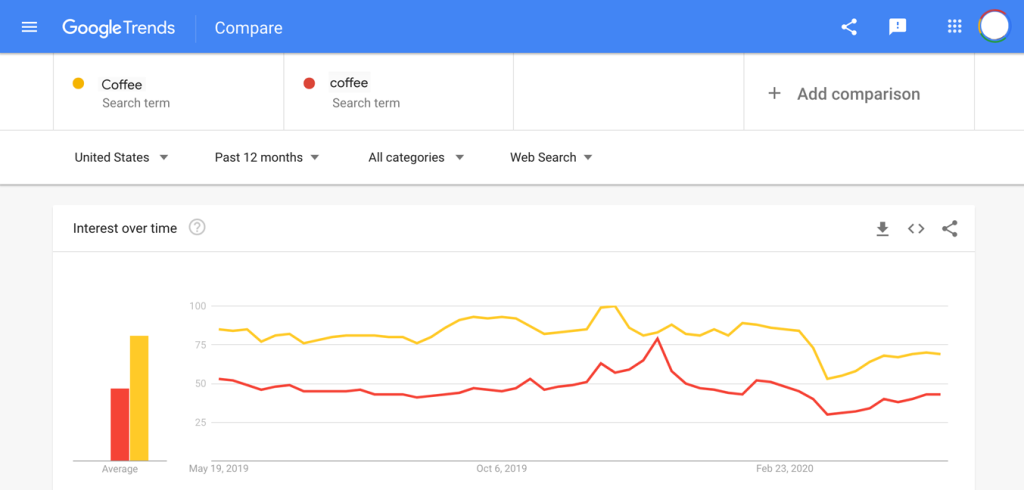
Use Google Trends to identify high-interest global and seasonal topics relevant to your industry. This can help draw your target audience from other sources and increase organic traffic to your website.
Increase productivity by integrating Google Trends with the robust SEO tools mentioned previously. This combination can help pinpoint valuable seed keywords that consistently attract traffic to your site. Leverage these keywords to explore current seasonal trends and topics within your niche more efficiently on Google Trends.
Identifying Ranking Drops: Strategies Recommended By Google
Danny Sullivan, Google’s Search Liaison, provides valuable insights into identifying and addressing drops in search rankings. Here are the key steps to take:
- Track Your Metrics: Utilize Google Search Console to compare your website’s performance over the past six months.
- Analyze Click Changes: In the “Queries” report, sort by “click change” to pinpoint keywords experiencing significant drops.
- Check Your Ranking: Your SEO efforts are likely effective if you’re still ranking high for those keywords.
- Expect Volatility: Keep in mind that Google’s algorithms constantly evolve, leading to natural fluctuations in rankings.
- Stay Relevant: Google prioritizes content that is helpful and relevant. Drops in rankings may occur if competitors produce more relevant content.
- Monitor Regularly: Continuously monitor your site’s performance using Search Console and other reliable SEO tools to catch potential issues early.
- Optimize for Google’s Standards: Stay informed about algorithm updates and adjust your site accordingly to maintain top rankings.
In summary, maintaining top rankings on Google requires consistent monitoring, staying updated on algorithm changes, and prioritizing creating valuable content to remain competitive.
Optimal Approaches For Recovering Organic Traffic: Solutions And Best Practices
Understanding sudden traffic drops and pinpointing their causes is crucial for website maintenance. Now, let’s delve into the steps to regain lost traffic systematically.
Focus On On-page SEO
Traffic drops may occur if you unintentionally de-optimize or excessively optimize your web pages. To recover lost traffic, optimize your content by strategically incorporating high-potential keywords to attract more visitors through search engines. Ensure that your content delivers high-quality and valuable information to engage your audience effectively.
Incorporate keywords naturally into your content to avoid negative impacts on SEO, such as keyword stuffing or unnatural placement. Additionally, include relevant keywords in compelling headings and meta tags to improve your page’s visibility in search results.
Strengthen your website’s internal linking structure by creating links within your site to direct users and search engine spiders to relevant information. Lastly, review and confirm that the no-index tag does not inadvertently block pages you intend to be indexed by Google.
Also Read: What Is On-Page SEO? And How to Do Onpage SEO
Enhance Technical SEO
Website speed is crucial for online performance. Use PageSpeed Insights to identify areas for improvement and optimize your site’s speed promptly. With mobile browsing prevalent, ensure your website is mobile-friendly by conducting a Mobile-Friendly Test.
However, technical SEO involves more than just speed. Two crucial areas require attention:
- Address broken links and redirects promptly to prevent frustration for users and search engines. Utilize dedicated tools to identify broken links and replace them with accurate ones. If content has moved, employ 301 redirects to guide users to the new location seamlessly.
- Ensure proper indexing of your pages by Google to avoid missing out on potential traffic. Speed up the indexing process by
- Removing robots.txt restrictions that block Google bots.
- Adding non-indexed pages to your sitemap.
- Eliminating blocking canonical tags.
- Enhancing content quality for greater value.
- Implementing internal linking strategies with relevant pages.
- Manually requesting indexing through Google Search Console.
Create Strong Backlinks
Backlinks play a crucial role in achieving favorable Google rankings, resulting in increased website traffic—a direct correlation. To recapture lost traffic, it’s imperative to adopt a strategic approach. Focus on building high-quality backlinks from authoritative sources within your niche, as this contributes to both ranking enhancements and attracting qualified visitors.
Guest contributions offer an effective method for acquiring valuable backlinks. Collaborating with relevant websites to provide valuable content can lead to securing reciprocal backlinks.
Alternatively, engaging with influential figures in your industry to emphasize the value of your content can help secure backlinks.
If outreach appears challenging, consider seeking assistance from a reputable provider to handle backlink building on your behalf, allowing you to concentrate on other business aspects.
Keep in mind that while backlinks are crucial, they represent just one aspect of the equation. High-quality content is equally essential. Your content’s informative and engaging nature significantly influences referral traffic and naturally attracts more backlinks, enhancing your website’s visibility and traffic.
Monitor Trends And Update Your SEO Strategy
Forget the idea of a one-time SEO fix. Consistent effort is crucial for attracting the traffic you deserve.
Regularly conduct thorough site audits to ensure your website operates smoothly, like a well-oiled machine. Stay vigilant about Google algorithm updates and industry trends to avoid surprises from sudden changes.
Competitor analysis is essential. Monitor their actions and adjust your SEO strategy to stay ahead and achieve exceptional results in this dynamic landscape.
Organic traffic is vital for your website. It brings in potential customers who can convert without straining your budget.
Therefore, a sudden drop in organic traffic can be alarming for webmasters and marketers.
If your website experiences a decline in organic traffic, promptly implement these practices to diagnose the cause and resolve any issues.
Remember, ongoing SEO efforts are crucial not only for maintaining or improving your organic traffic during good times but also for lessening the impact of unforeseen challenges in the future. By adapting your SEO strategy to market trends, you can ensure your website continues to thrive.
Rankings Dropped Since September 2023? Blame Google Glitch!
We aim to keep you updated on the latest SEO and digital marketing developments. Here’s an important update from Google’s Search Liaison, Danny Sullivan, regarding recent fluctuations in organic traffic experienced by many websites.
Google’s Response to Traffic Drops
On Friday, November 18th, Danny Sullivan announced that website owners experiencing a significant drop in traffic from Google Search, Google Discover, and Google News can seek assistance directly. He outlined two ways to report these issues:
Reply to the ongoing thread on platform X.
Post a help thread in Google’s forums.
Sullivan emphasized the opportunity to share site details in these channels for further investigation, although the identified bug has been resolved.
No Immediate Solution, But a Step Forward:
While contacting Google doesn’t promise immediate traffic recovery, it does provide a channel for potential adjustments in Google’s algorithms. John Mueller of Google advised a strategic SEO approach that prioritizes long-term value over short-term tactics.
Conclusion
In conclusion, the current situation emphasizes the vital role of resilience and adaptability in SEO. While the immediate impact of Google’s feedback remains uncertain, it offers an opportunity to realign our strategies with the evolving algorithms and user expectations of Google. Stay updated for future developments, and feel free to share your experiences or insights in the comments section.
FAQs
How does SEO affect website traffic?
SEO affects website traffic by increasing visibility, improving rankings, attracting targeted visitors, enhancing click-through rates, optimizing user experience, and leveraging local search opportunities. Effective SEO strategies can result in sustained organic traffic growth over time.
Why is my website getting traffic but not sales?
Your website may be getting traffic but not generating sales for several reasons, such as unclear messaging, a complicated checkout process, irrelevant traffic sources, poor user experience, or inadequate product information. Identifying and addressing these issues can help convert website visitors into customers.
How to do traffic drop analysis?
To conduct a traffic drop analysis, pinpoint the specific period of decline and identify affected pages using analytics. Investigate recent website changes, search engine algorithm updates, and backlink fluctuations. Compare competitor performance and check for technical issues like downtime or indexing problems. Assess content quality, user experience, and SEO alignment. Implement necessary fixes based on findings to restore and enhance website traffic.
What techniques can increase your organic traffic?
To increase organic traffic, focus on keyword optimization, crafting high-quality content, and implementing on-page SEO techniques. Ensure your website is mobile-friendly and build backlinks from reputable sources. Leverage social media for content promotion and maintain regular updates to stay relevant. Optimize for local searches and prioritize user experience. Continuously analyze performance data and adapt your strategy accordingly for sustained growth.
